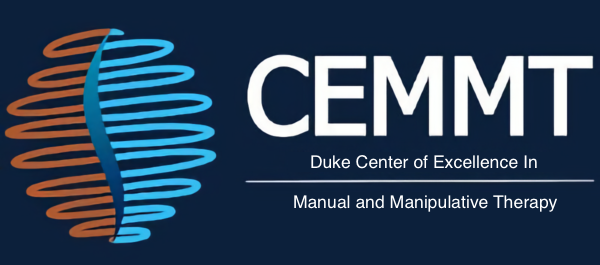Author Names
Florian Schwerla , Katrin Rother , Denis Rother , Michaela Ruetz and Karl-Ludwig Resch
Reviewer Name
Deja Linton, SPT
Reviewer Affiliations
Duke University School of Medicine, Doctor of Physical Therapy Division
Paper Abstract
The purpose of this study was to evaluate the effectiveness of osteopathic manipulative therapy (OMTh; manipulative care provided by foreign-trained osteopaths) in women with persistent LBP and functional disability after childbirth. A pragmatic randomized controlled trial was conducted among a sample of women with a history of pregnancy-related LBP for at least 3 months after delivery. Participants were identified from the general population in Germany. By means of external randomization, women were allocated to an OMTh group and a waitlist control group. Osteopathic manipulative therapy was provided 4 times at intervals of 2 weeks, with a follow-up after 12 weeks. The OMTh was tailored to each participant and based on osteopathic principles. The participants allocated to the control group did not receive OMTh during the 8-week study; rather, they were put on a waiting list to receive OMTh on completion of the study. Further, they were not allowed to receive any additional treatment (ie, medication, physical therapy, or other sources of pain relief) during the study period. The main outcome measures were pain intensity as measured by a visual analog scale and the effect of LBP on daily activities as assessed by the Oswestry Disability Index (ODI). A total of 80 women aged between 23 and 42 years (mean [SD], 33.6 [4.5] years) were included in the study, with 40 in the OMTh group and 40 in the control group. Pain intensity decreased in the OMTh group from 7.3 to 2.0 (95% CI, 4.8-5.9; P<.001) and in the control group from 7.0 to 6.5 (95% CI, -0.2 to -0.9; P=.005). The between-group comparison of changes revealed a statistically significant improvement in pain intensity in the OMTh group (between-group difference of means, 4.8; 95% CI, 4.1-5.4; P<.001) and level of disability (between-group difference of means, 10.6; 95% CI, 9.9-13.2; P<.005). The follow-up assessment in the OMTh group (n=38) showed further improvement. During 8 weeks, OMTh applied 4 times led to clinically relevant positive changes in pain intensity and functional disability in women with postpartum LBP. Further studies that include prolonged follow-up periods are warranted.
NIH Risk of Bias Tool
Quality Assessment of Controlled Intervention Studies
- Was the study described as randomized, a randomized trial, a randomized clinical trial, or an RCT
- Yes
- Was the method of randomization adequate (i.e., use of randomly generated assignment)?
- Yes
- Was the treatment allocation concealed (so that assignments could not be predicted)?
- Yes
- Were study participants and providers blinded to treatment group assignment?
- No
- Were the people assessing the outcomes blinded to the participants’ group assignments?
- Cannot Determine, Not Reported, or Not Applicable
- Were the groups similar at baseline on important characteristics that could affect outcomes (e.g., demographics, risk factors, co-morbid conditions)?
- Yes
- Was the overall drop-out rate from the study at endpoint 20% or lower of the number allocated to treatment?
- Yes
- Was the differential drop-out rate (between treatment groups) at endpoint 15 percentage points or lower?
- Yes
- Was there high adherence to the intervention protocols for each treatment group?
- Yes
- Were other interventions avoided or similar in the groups (e.g., similar background treatments)?
- Yes
- Were outcomes assessed using valid and reliable measures, implemented consistently across all study participants?
- Yes
- Did the authors report that the sample size was sufficiently large to be able to detect a difference in the main outcome between groups with at least 80% power?
- Yes
- Were outcomes reported or subgroups analyzed prespecified (i.e., identified before analyses were conducted)?
- No
- Were all randomized participants analyzed in the group to which they were originally assigned, i.e., did they use an intention-to-treat analysis?
- Yes
Key Finding #1
During the 8 weeks, OMTh applied 4 times led to clinically relevant positive changes in pain intensity and functional disability in women with postpartum LBP
Key Finding #2
In the OMTh group, pain intensity improved by more than 70%. This finding corresponds to an effect size of about 3, which is remarkably high.
Key Finding #3
Analysis of mean VAS and ODI scores at baseline and conclusion of the trial indicate a significant change for the OMTh group and marginal change for the untreated control group.
Please provide your summary of the paper
Low back pain (LBP) is a common complaint among women both during and after pregnancy. The effects of this condition can impact one’s activities of daily living (ADL’s) to the point that quality of life diminishes. This randomized control trial evaluates the possible benefits and effectiveness of osteopathic manipulative therapy (OMTh) by pragmatically modeling the real-life decision of seeking OMTh treatment versus not, aiding in clinical decision-making. While this study had significant strengths (low risk of bias, no adverse outcomes, clinically relevant findings), it also had limitations that include lack of blinding which should be taken into consideration when coupled with self-assessment outcome measures.
Please provide your clinical interpretation of this paper. Include how this study may impact clinical practice and how the results can be implemented.
The findings of this study may be of interest to any manual therapy practitioners (or other healthcare professionals with the ability to refer patients outward) who are, or intend to, treat persons in the postpartum period. Future studies including prolonged follow-up periods and the effects of specific manipulations may be the fundamental next step to aid in clinical decision-making for both clinicians and patients.
